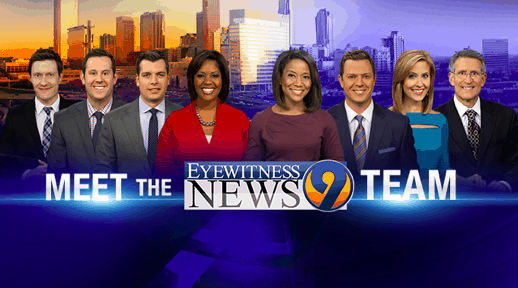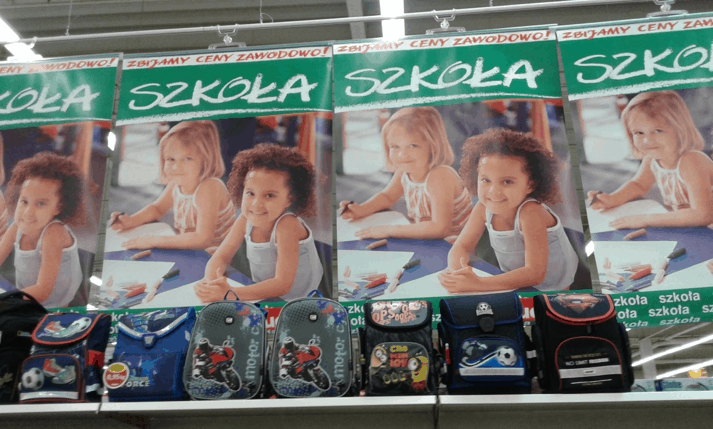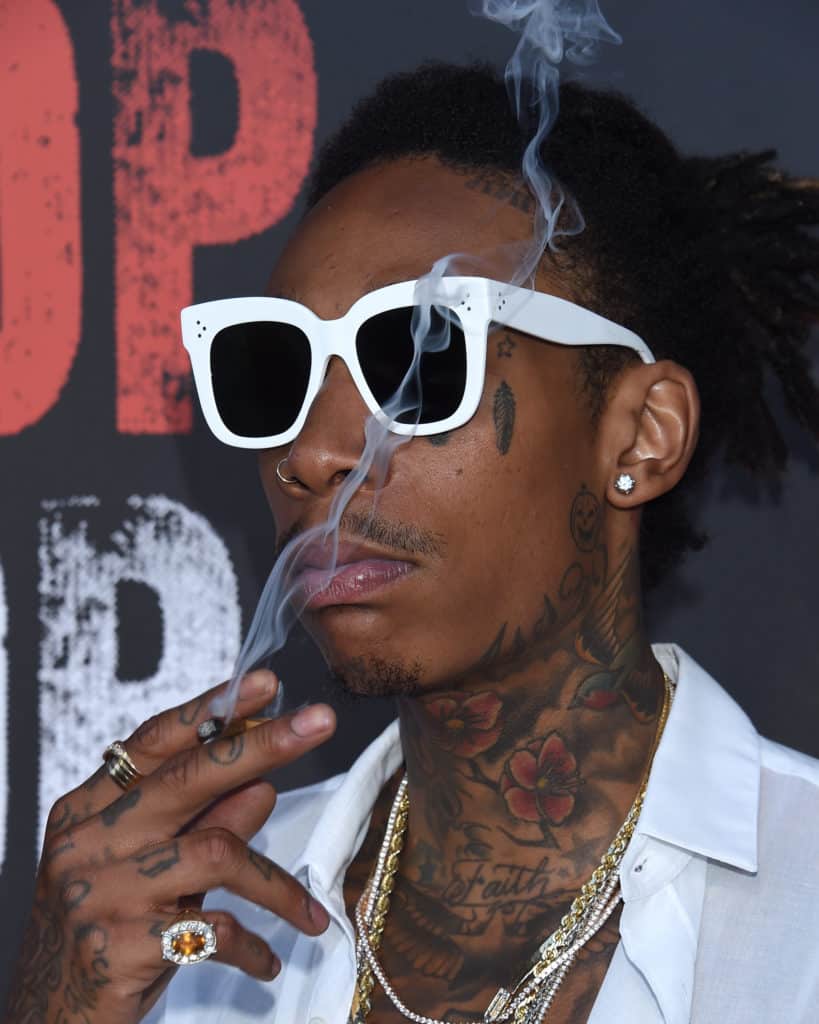This is the fourth in a series about life in a white country: Poland (here is Part I, here is Part II, and here is Part III). The author is an American who is very familiar with his homeland.
We have all heard this joke: A visitor from Mars, after watching an hour of American television, would never believe that blacks were only 13 percent of the population.
Only the smallest local television stations can have an all-white news team. Most primetime dramas and comedies take place in a strange world where every school, neighborhood, and social setting is fully integrated. Try finding a live-action program for children with a cast that does not look like a mini-United Nations. Even people on channels as frivolous as ESPN must have minorities in the right proportions — and still, the professional complainers want more.
“Only” 25 percent, but right up front.
Ethnic quotas and “diversity” apply on both sides of the camera and are baked into every script. It is all part of the calculus that takes over in a multiracial society, where everything becomes political. Even the background music for mindless entertainment is a cultural battlefield with every tribe keeping count, and ready to scream if they feel slighted.
When the content of a program makes it hard to shoehorn in blacks — there is just no role for the wise judge, medical expert, computer genius, etc. — the first commercial break will prove that no television screen can be too white for too long.
Black faces in a white country
Things are different in a homogeneous country. Although there are signs that Poland is catching up in ways that I wish it was not, entertainment and marketing media representations of racial minorities are still rare and mostly free from the ideological baggage required in America.
First, the good news: Race and media in Poland are not the minefield of delicate sensitivities that they are in the West. Poles do not believe that you have to heap endless praise on every depiction of black people or other non-whites. They feel no need to pretend that something is profound or important just because it is by, for, or about non-whites.
My favorite example of this is a program on one of the biggest networks, called “Twoja Twarz Brzmi Znajomo” (“Your Face Seems Familiar”). It is a variety show in which celebrities perform famous songs while dressed up as the original artist. They wear makeup, prosthetics, and wigs to complete the look, and this includes tributes to black singers. Take a look at this one, of Bob Marley:
This could never be on American television. A white person dressing like a black is radioactive. But in Poland, this program averages about two million viewers per episode in a country of 40 million people. In US terms, that is about twice the size of the audience of the nightly network news. And you will search in vain for outraged editorials about the crime of singing in blackface. No one thinks it’s “racist.” It is just celebrities singing songs everyone likes — and trying to be as authentic as possible.
“Your Face Seems Familiar” is a huge success in Poland but unimaginable in the US. This must be because either absurdly hypersensitive American audiences interpret what is intended as flattery as an insult, or Polish audiences enjoy mocking black people. One or the other has to be true. Which is the more likely explanation?
More good news is the total box-office failure of what John Derbyshire calls “Civil Rights Porn.” Any film based on black victimhood or variations on the idea of how hard it is to be black in America is dead on arrival. Only the most dedicated film buffs or those who are unaware of the political dimensions of Oscar nominations bother with “Hidden Figures” or “12 Years a Slave.” Even after “Moonlight” won the Academy Award for Best Picture in February, it was distributed in a very limited release and was gone in two weeks. A friend in the business tells me studios strong-arm exhibitors into showing these films by bundling them with sure-fire blockbusters.
On the other hand . . .
Like their colleagues on Madison Avenue and in Hollywood, Polish media are not immune from the temptation to demonstrate how non-racist they are. This means competition for non-whites who speak Polish is intense. Omenaa Mensah is one of several mixed-race Poles — all women — to succeed in television here. She was born here to a Polish mother and a Ghanaian father, studied economics in college, and appeared in Poland’s Playboy, all of which apparently made her the ideal weather presenter on a major television network. After achieving fame in her mother’s homeland based on her unique background, Miss Mensah established a foundation that helps the needy (in Ghana) and promotes tolerance (in Poland). Other women, all with a Polish mother and African father, have attained similar notoriety. It may be unfair to suggest that they have been successful only because of their racial background, but there is no question that their exotic appearance opened many doors.
The same principle applies to casting for children’s programs that, while not as bad as similar programs in the UK and US, never shut up about the wonderful rainbow of human races. A good portion of the programming for children on Polish television is dubbed versions of shows from Nickelodeon, Disney, and the BBC, so they are what you would expect. TVP, the Polish state broadcaster, even has a special show on a children’s channel that features only children from other cultures who live in Poland. Any reasonably telegenic mixed-race Polish kid has a good chance at a television career.
As I have noted elsewhere, the Vietnamese are the most numerous non-European minority in Poland, at about 40 thousand. The strange thing is that you never see them on television or in popular culture — yet blacks, or at least half-blacks, are not uncommon. Why do casting directors ignore the biggest minority, and reach down into the minuscule population of blacks? Perhaps they take their cue from the messages constantly pushed in American entertainment and marketing.
More changes in the wrong direction can be seen in advertising. There was a time when advertisements used in other regions by multinational companies would be adapted for the Polish market — however clumsily — to reflect local demography, but those days are gone. There are now distinctly Polish commercials and print ads that come with the same racial “twists” common in American advertising. Here is an example that got massive play during last Christmas season:
Minority faces seem to appear in ads for no other reason than to provoke a response. Here is a local supermarket promotion for back-to-school supplies:
Why does arguably the single rarest type of child in the entire Polish school system have to be up front in this campaign? If the producers absolutely must pretend to love diversity, why not feature a Vietnamese girl? There will be a fair number of Vietnamese parents shopping for supplies, but virtually no blacks.
The future seems . . . dark
As I write this, my son is watching a Nickelodeon show for pre-teens on Polish TV. A nerdy black kid with a pocket protector and an equally nerdy white friend are asking a prim and proper light-skinned black school administrator how they can avoid school bullies who steal their lunch money and threaten them. You can guess the race of the bullies.
When we go shopping, we see smiling little black girls reminding us that the new school year starts soon. There are billboards all over town right now promoting a summer concert festival featuring the tattooed, pot-smoking image of black rapper Wiz Khalifa. The internet now brings exactly the same Hollywood content and agenda to everyone. Netflix has been a huge success in Poland since its launch about a year and a half ago, so everyone can watch “Orange is the New Black.”
Wiz Khalifa (Credit Image: © Jim Smeal/Rex Shutterstock via ZUMA Press)
A Polish friend, an otherwise intelligent and reasonable person, watched “The Civil War,” the Ken Burns documentary, through Netflix. Now he thinks the South is full of terrible people, and that America owes blacks reparations.
I wish I had better news, but my own feeling is that American and Polish attitudes about race in the media will converge, with Poland doing all the converging. It is hard to imagine that Poland will ever adopt full-on crazy American-style race neuroticism, but the trend is definitely in that direction. Poland follows every social, commercial, and media trend from the West and there is no reason to believe that the fetishization of blacks will not continue. This is happening, in a country that has no historical connection to blacks and no reason to feel any collective guilt towards them.
I fear that one day Martians will be equally confused after watching an hour of Polish television as an hour of American television.



